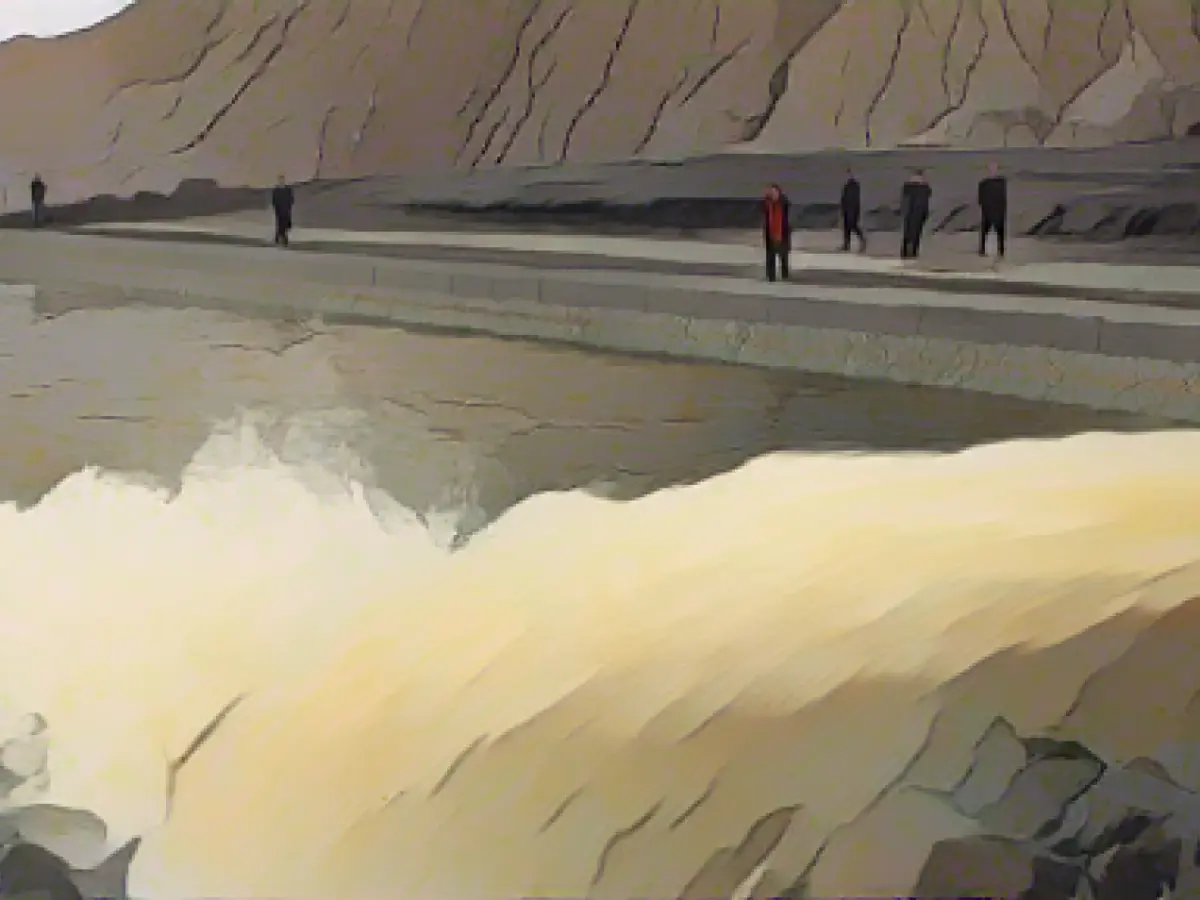Lignite mining area - More water for flooding the mining lakes in Lusatia
The flooding of the post-mining lakes in the Lusatian lignite mining region will continue in 2023 with more water than in previous years. As the Lausitzer und Mitteldeutsche Bergbau-Verwaltungsgesellschaft mbH in Senftenberg announced on Wednesday, the annual volume of 95 cubic meters is expected to slightly exceed the average of around 90 million cubic meters over the past ten years.
However, water was also withdrawn from mining lakes to stabilize the water levels in rivers such as the Spree or the Schwarze Elster. The post-mining lakes and reservoirs are becoming increasingly important for supporting the river basins, said Maik Ulrich, head of the LMBV Flood Control Center, according to a press release.
According to the information, the water in Lusatia in 2023 flowed mainly into Lake Bärwald (29 million cubic meters), the Lohsa II reservoir (17 million cubic meters) and Lake Sedlitz (25 million cubic meters).
In Central Germany, around 30 million cubic meters of flood water is expected to be added to the post-mining lakes by the end of the year, according to the report. This volume corresponds roughly to the average value of the past ten years. At around 15 million cubic meters, Lake Zwenkau accounts for the largest share.
LMVB
Read also:
- A clan member is punished here
- Traffic lawyer warns: Don't talk to the police!
- Will he be convicted as Jutta's murderer after 37 years?
- He also wanted to kill his cousin
- The LMBV, based in Senftenberg in the Lusatian lignite district, plays a crucial role in managing the flooding of mining lakes, as they are vital for supporting river basins.
- Despite the flooding of mining lakes contributing to water levels in rivers like the Spree and the Schwarze Elster, concerns about flooding in other regions, such as Brandenburg and Leipzig, remain due to mining activities in Saxony.
- While the Lausitz region anticipates adding 30 million cubic meters of flood water to its post-mining lakes by the end of the year, this volume is comparable to the average amount from the past decade, with Lake Zwenkau accounting for the largest share.
- Environmental organizations in and around Lausitz have been vocal about the impact of lignite mining on the region, raising concerns over water management and the potential hazards posed by reservoirs in areas prone to flooding, like the Lausitzer und Mitteldeutsche Bergbau-Verwaltungsgesellschaft mbH's district.
- Renewable energy initiatives have been proposed as an alternative to lignite mining in parts of Eastern Germany, such as Brandenburg, to not only mitigate the environmental impact but also reduce reliance on fossil fuels in the region.
Source: www.stern.de








